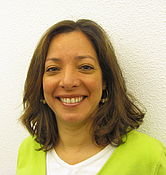M. Hernandez Santana (Marianella)
Biography
I received my BSc degree in Materials Engineering from Universidad Simón Bolívar (Caracas,Venezuela) and then obtained a MSc in Macromolecular Physical-Chemistry from the Ecole d´Applications des Hauts Polymères/Université Louis Pasteur (Strasbourg, France). My professional career started working as a Researcher at INTEVEP, the top level Institute of Research and Technology of the state-run oil company Petróleos de Venezuela S.A. (Caracas, Venezuela). This period represented a unique opportunity to gain experience in polymers processing and applications, as well as to improve applied research competences. Then I held the position of Associate Professor in Materials Engineering at Simón Bolívar University (Caracas, Venezuela). During this time I covered all the aspects related to a university position: teaching, research, and technology transfer; with research lines focused on elastomeric materials and participation in several R&D projects. Willing to continue my research career in a cutting edge research institution, I joined the Nanocomposites Group at the Institute of Polymer Science and Technology, ICTP-CSIC (Madrid, Spain) as a PhD Student. My challenge was to study the molecular dynamics of Natural Rubber (NR) nanocomposites with layered silicate (montmorillonite) and carbon based nanofillers (carbon nanotubes and functionalized graphene sheets), in order to understand the physical relations between the different phases and interfaces present in the nanocomposite and its implication on the improvement of the final properties of the material. In 2014 I was awarded with a Marie Curie Fellowship from the European Commission to work at the Novel Aerospace Materials Group (TUDelft, The Netherlands). I have published over 40 peer-reviewed articles in leading international journals and two book chapters.
Current Project
The aim of my work is to develop Natural Rubber compounds with self-healing properties, following the intrinsic self-healing approach based on reversible bonding and by the inclusion of conductive nanoparticles. In this sense, both mechanical and electrical functionalities can be restored. Special attention will be paid to the overall molecular dynamics of these materials. It is believed that a systematic research on the relaxation behaviour of these elastomers will help to elucidate the role of the key healing parameters (healing time and temperature). The new insight into the character of both the network structure and the cross-linking system by means of dielectric processes will be useful in controlling self-healing properties of all elastomeric self-healing systems to be developed in the future.
Affiliated Researcher

Dr. M. Hernandez Santana
- M.HernandezSantana-1@tudelft.nl
-
Faculty of Aerospace Engineering
Novel Aerospace Materials
Kluyverweg 1
2629 HS Delft, The Netherlands